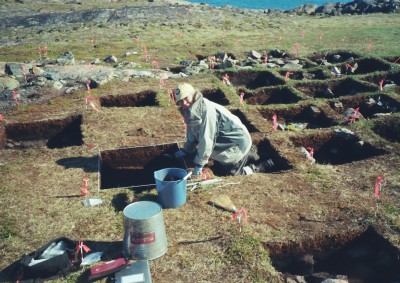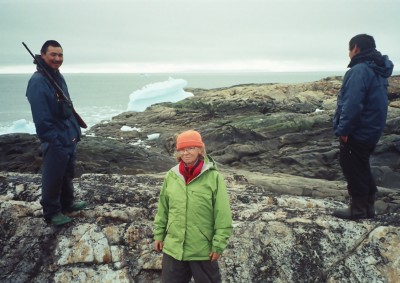Only the most intrepid explorer would be galvanized by an adventure which boasted harsh conditions, hard physical labour, cold weather, a remote location and the risk of polar bear attacks.
Shelley Hartman, entering her fourth year in Greek and Roman Studies was not to be deterred from participating on an archeological dig in the Arctic. Not even the requirement of a firearms permit hindered her.
This summer, Dr. Pat Sutherland, the Canadian Museum of Civilization’s curator for the Eastern Arctic led a team of seven on two sites in Cape Tanfield in the Hudson Strait.
“The area shows occupation by Dorset, Thule and Norse, dating from roughly the same time as the Greenland homesteads and L’Anse Aux Meadows, AD 900-1000,” said Hartman of the site which is thought to have been a trading centre for the region. “The artifacts include native tools made of chert, slate and quartz crystal, skins and hair, and Norse artifacts.” Among the latter were a variety of tools used for counting, weaving, sharpening and weighing.
In addition to toiling in trenches illuminated by near 24 hour daylight, Hartman spent five weeks eating freeze-dried food and clothed in the same outfit.
“We slept in tents surrounded by a bear fence, had a latrine, no showers – just an arctic pond,” said Hartman.
So great was the risk of attacks by polar bears, it was necessary for each participant to have a gun permit, and for a bear monitor to be employed to keep watch over the group.
When warned by Dr. Sutherland that the dig would be grueling work, Hartman said she replied “this sounds like the scariest thing I have ever thought of doing… I’m in!” It turned out to be a once in a life time opportunity.

